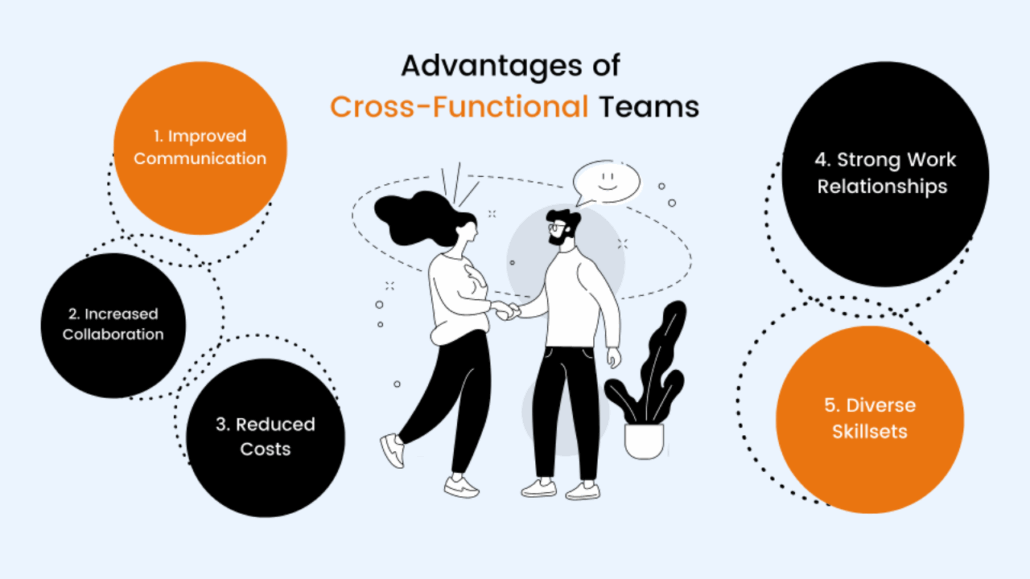High-Performing Cross-Functional Organizations: Lessons from the Trenches

If you’ve ever tried to build a cross-functional organization — one that unites product, design, engineering, and go-to-market teams — you’ll quickly realize it’s a lot like assembling Ikea furniture without instructions: possible, but your odds of accidentally building a nightstand instead of a desk are high.
Over the years at Vindy, Xima, and Sidewalk, I’ve had the privilege (and occasional sleepless night) of scaling organizations across multiple disciplines. Each experience reinforced one clear lesson: high-performing cross-functional teams don’t just happen. They are built — intentionally, methodically, and with just enough humor to keep everyone from losing their minds.
Let’s dig into what it really takes.

1. Start With a Shared Mission (Not Just KPIs)
At Sidewalk, we were building customer-centric solutions that required product managers, designers, engineers, and marketers to be in lockstep. The secret sauce? A unified mission statement everyone could rally behind — not just departmental goals.
Without a shared mission, teams inevitably start speaking different languages. (“Why are marketing’s priorities different from product’s?” “Why are engineers allergic to deadlines?”) Shared goals allow you to move from “them vs. us” to “we.”
Pro Tip: Develop an organizational North Star — a single guiding statement that connects everyone’s role to customer outcomes.
2. Build Teams Around Problems, Not Functions
Traditional orgs group people by discipline. That’s fine for a medieval castle, but in today’s markets, speed and adaptability are survival skills.
At Xima, we reorganized into pods — cross-functional teams aligned around key customer problems. Each pod included product, engineering, design, and go-to-market. This model supercharged collaboration and accountability because every pod owned a customer outcome, not just a list of features or MQLs.
Pods also prevent the dreaded “throw it over the wall” syndrome. (If you’ve worked in silos, you know the wall — it’s about 20 feet high and made of passive-aggressive Slack messages.)
3. Hire Athletes, Not Specialists (At Least Early On)
During the early days at Vindy, when we were building new lines of business, we didn’t have the luxury of staffing one specialist per need. We hired versatile “athletes” — people who could write product specs, jump into customer interviews, design a pitch deck, and maybe fix the WiFi if needed.
As you scale, specialists become necessary. But early on, broad thinkers who thrive in ambiguity are your best asset.
Pro Tip: Screen for adaptability and collaboration skills, not just technical excellence.
4. Communication Isn’t an Overhead Cost — It’s the Product
At Sidewalk, one of our mantras was, “If it’s not documented, it doesn’t exist.” Cross-functional organizations thrive on transparency: shared roadmaps, accessible documentation, open demos, and ruthless clarity in communication.
Remember: no one wakes up thinking about someone else’s priorities. If you don’t over-communicate, silos will happily rebuild themselves while you’re busy fine-tuning your Jira workflows.
Tactical Tip: Use working groups and office hours between teams. It beats yet another 20-person status meeting where only three people talk.
5. Create (and Celebrate) Feedback Loops
Scaling cross-functional teams means feedback isn’t a luxury; it’s a survival mechanism. At Xima, we institutionalized feedback through:
-
Bi-weekly retrospectives
-
Real-time customer signal reviews
-
Cross-department post-mortems on big launches
The point isn’t to create blame sessions (trust me, engineers will always blame scope creep, and marketers will always blame the leads). It’s to learn fast and adjust faster.
When things went right, we celebrated the collaboration, not just the metrics. (And yes, we occasionally celebrated with cupcakes. Highly recommend.)
6. Scaling Isn’t About Adding More Bodies
Adding people to a struggling system often creates more problems. (It’s like trying to fix bad spaghetti code by hiring five more junior developers.)
At Vindy, our biggest scaling wins came not from hiring sprees, but from building better systems. We:
-
Created modular product roadmaps
-
Automated repeatable marketing motions
-
Invested in internal tooling to reduce manual drudgery
Systems scale. Heroics don’t.
7. Trust Is the Only True Scaling Mechanism
At every company — Vindy, Xima, Sidewalk — the biggest unlock wasn’t tech stacks, OKRs, or executive retreats with suspiciously nice charcuterie boards. It was trust.
When product trusts engineering to deliver, when sales trusts product to solve real problems, and when marketing trusts design to craft meaningful experiences, everything moves faster — and better.
Building trust isn’t a “culture initiative” you assign to HR. It’s embedded in how leaders behave daily: transparency, accountability, vulnerability, and ownership.
Parting Thoughts: It’s a Marathon With Sprints Inside
Building a high-performing cross-functional organization isn’t a straight line. It’s messy, iterative, and sometimes maddening. You’ll have weeks where everything clicks — and others where you wonder if the entire team has been abducted by well-meaning but very slow aliens.
At Vindy, Xima, and Sidewalk, the winning formula wasn’t a magic toolset. It was a relentless focus on aligning people around customer outcomes, empowering them to own problems end-to-end, and creating systems that respected both speed and sustainability.
Oh, and cupcakes. Seriously. Never underestimate the power of baked goods in building high-performing teams.



